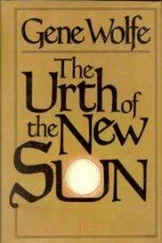Tom Wolfe - The Right Stuff
Здесь есть возможность читать онлайн «Tom Wolfe - The Right Stuff» весь текст электронной книги совершенно бесплатно (целиком полную версию без сокращений). В некоторых случаях можно слушать аудио, скачать через торрент в формате fb2 и присутствует краткое содержание. Жанр: Современная проза, на английском языке. Описание произведения, (предисловие) а так же отзывы посетителей доступны на портале библиотеки ЛибКат.
- Название:The Right Stuff
- Автор:
- Жанр:
- Год:неизвестен
- ISBN:нет данных
- Рейтинг книги:3 / 5. Голосов: 1
-
Избранное:Добавить в избранное
- Отзывы:
-
Ваша оценка:
- 60
- 1
- 2
- 3
- 4
- 5
The Right Stuff: краткое содержание, описание и аннотация
Предлагаем к чтению аннотацию, описание, краткое содержание или предисловие (зависит от того, что написал сам автор книги «The Right Stuff»). Если вы не нашли необходимую информацию о книге — напишите в комментариях, мы постараемся отыскать её.
The Right Stuff — читать онлайн бесплатно полную книгу (весь текст) целиком
Ниже представлен текст книги, разбитый по страницам. Система сохранения места последней прочитанной страницы, позволяет с удобством читать онлайн бесплатно книгу «The Right Stuff», без необходимости каждый раз заново искать на чём Вы остановились. Поставьте закладку, и сможете в любой момент перейти на страницу, на которой закончили чтение.
Интервал:
Закладка:
They talked for a long time. Someone Schirra's age had more to lose than Conrad, who was only twenty-eight. But as every officer knew, it was never too early to screw up your career in the Navy by getting involved in what was known, with some sarcasm, as "innovative duty."
From the beginning George Low and others in the NASA hierarchy had been afraid that the pilots would react in precisely this way. As a result, they were amazed. They had briefed thirty-five test pilots on Monday, February 2, Conrad, Schirra, Lovell, and Alan Shepard among them, and another thirty-four the following Monday; and of the total of sixty-nine, fifty-six volunteered to become astronauts. They now had so many volunteers they didn't even call in the remaining forty-one men who fit the profile. Why bother? They already had fifty-six grossly overqualified volunteers. Not only that, the men seemed so gung-ho about the project, they figured they could get by with seven astronauts instead of twelve.
Pete Conrad had ended up volunteering, and so had Jim Lovell. In fact, every man who had been in that room at the motel had volunteered, including Wally Schirra, who had been the most dubious of all. And why? That was a good question. Despite all the pondering, all the discussions, all the career-wrestling, all the toting up of pros and cons, none of them could give you a very clear-cut answer. The matter had not been decided by sheer logic. Somehow, in that briefing in the inner room at the Pentagon, Silverstein and Low had hit every button just right. It was as if they possessed a blueprint of the way the fighter jock was wired.
"The highest national priority"… "hazardous undertaking"… "strictly volunteer"… so hazardous that "if you don't volunteer, it won't be held against you"… And they had all gotten the signal, subliminally, in the solar plexus. They were being presented with the Cold War version of the dangerous mission . One of the maxims that was drilled into all career officers went: Never refuse a combat assignment . Moreover, there was the business of "the first men to go into space." The first men to go into space . Well… suppose it happened just that way? The rocket aces at Edwards, from their eminence, might be able to look down upon the whole scheme. But within the souls of the rest of the fighter jocks who came to the Pentagon was triggered a motivation that overrode all strictly logical career considerations: I must not get… left behind .
That feeling was magnified by the public reaction. No sooner had the first group of men been briefed than the news that NASA was looking for Mercury astronauts made its way into the press. From the beginning the reporters and broadcasters dealt with the subject in tones of awe. It was the awe that one has of an impending death-defying stunt. The question of whether an astronaut was a pilot or a mere guinea pig never entered into it for a moment, so far as the press was concerned. "Are they really looking for somebody to go into space on top of a rocket?" That was the question and the only one that seemed to matter. To almost anyone who had followed NASA's efforts on television, the odds against the successful launch of an American into space seemed absolutely dreadful. For fourteen months now the Eisenhower Administration had adopted the strategy of openly publicizing its attempts to catch up with the Russians—and so people were being treated to the sight of the rockets at Cape Canaveral and Wallops Island, Virginia, either blowing up on the launch pad in the most ignominious, if briefly hilarious, fashion or else heading off on crazy trajectories, toward downtown Orlando instead of outer space, in which case they had to be blown up by remote control. Well, not all of them, of course, for the United States had succeeded in putting up some small satellites, mere "oranges," as Nikita Khrushchev liked to put it, in his cruel colorful farmboy way, as compared to the 1,000-pound Sputniks the mighty Integral was sending around the earth loaded with dogs and other experimental animals. But the only obvious American talent was for blowing up. They had many names, these rockets, Atlas, Navaho, Little Joe, Jupiter, but they all blew up.
Conrad, like Schirra or any other test pilot, did not look at the TV footage in the same light, however. What people were seeing on television were, in fact, ordinary test events. Blown engines were par for the course in testing aircraft prototypes and were inevitable in testing an entirely new propulsion system such as jet or rocket engines. It had happened at Muroc in testing the engine of the second American jet fighter, the XP-80. Obviously you didn't send a man up with an engine until it had attained a certain level of reliability. The only thing unusual about the testing of big rocket engines like the Navaho and the Atlas was that so much of it was televised and that these normal test events came across as colossal "failures." They were not even radical engines. The rocket engines that had been used in the X-1 project and all of the X projects that followed employed the same basic power plants as the Atlas, the Jupiter, and the other rockets NASA was working with. They used the same fuel, liquid oxygen. The X-project rockets, inevitably, had blown in the testing stage, but had been made reliable in the end. No rocket pilot had ever had an engine blow up under him in flight, although one, Skip Ziegler, had died when an X-2 had exploded while it was still attached to the B-50 that was supposed to launch it. To pilots who had been through bad strings at Pax River or Edwards, it was hard to see how the risk would be any greater than in testing the Century series of jet fighters. Just think of a beast like the F-102… or the F-104… or the F-105…
When Pete talked to Jane about Project Mercury, she was all for it! If he wanted to volunteer, then he should by all means do so. The thought of Pete riding a NASA rocket did not fill her with horror. On the contrary. Although she never quite put it this way to Pete, she felt that anything would be better, safer, saner than for him to continue flying high-performance jet fighters for the Navy. At the very least, astronaut training would take him away from that. As for rocket flights themselves, how could they possibly be any more dangerous than flying every day at Pax River? What rocket pilot's wife had ever been to more funerals than the wives of Group 20?
Albuquerque, home of the Lovelace Clinic, was a dirty red sod-hut tortilla highway desert city that was remarkably short on charm, despite the Mexican touch here and there. But career officers were used to dreary real estate. That was what they inhabited in America, especially if they were fliers. No, it was Lovelace itself that began to get everybody's back up. Lovelace was a fairly new private diagnostic clinic, somewhat like the Mayo Clinic, doing "aerospace-medical" work for the government, among other things. Lovelace had been founded by Randy Lovelace—W. Randolph Lovelace II—who had served along with Crossfield and Flickinger on the committee on "human factors" in space flight. The chief of the medical staff at Lovelace was a recently retired general of the Air Force medical corps, Dr. A. H. Schwichtenberg. He was General Schwichtenberg to everybody at Lovelace. The operation took itself very seriously. The candidates for astronaut would be given their physical testing here. Then they would go to Wright-Patterson Air Force Base in Dayton for psychological and stress testing. It was all very hush-hush. Conrad went to Lovelace in a group of only six men, once more in their ill-fitting mufti and terrific watches, apparently so that they would blend in with the clinic's civilian patients. They had been warned that the tests at Lovelace and Wright-Patterson would be more exacting and strenuous than any they had ever taken. It was not the tests per se , however, that made every self-respecting fighter jock, early in the game, begin to hate Lovelace.
Читать дальшеИнтервал:
Закладка:
Похожие книги на «The Right Stuff»
Представляем Вашему вниманию похожие книги на «The Right Stuff» списком для выбора. Мы отобрали схожую по названию и смыслу литературу в надежде предоставить читателям больше вариантов отыскать новые, интересные, ещё непрочитанные произведения.
Обсуждение, отзывы о книге «The Right Stuff» и просто собственные мнения читателей. Оставьте ваши комментарии, напишите, что Вы думаете о произведении, его смысле или главных героях. Укажите что конкретно понравилось, а что нет, и почему Вы так считаете.











